When it comes to construction projects, the space that you’re filling is equally as important as the structure that you’re building. That’s why site analysis is so important to a successful construction project; whatever you’re building must work in the space both aesthetically and structurally.
Since site analysis is so important, we’ll first define it and detail its purpose in construction project management. Then we’ll outline the steps involved in site analysis and share a site analysis checklist to ensure you do a thorough job.
What Is an Architecture Site Analysis?
Site analysis in architecture is a process that involves research and analysis of the social, historical, climatic, geographic, legal and infrastructure aspects of a location. This work is delivered visually, such as site analysis diagrams, which are then used when planning to build a structure or building.
Using the architecture site analysis with the other construction project data will allow architects to make more insightful decisions when designing their structure or building. They will be important documents during the design process and will influence the programmatic realities but also the structural and even aesthetic decisions. That is, the shape, form and materials used.
Architecture site analysis informs the design but it’s also helpful for the general contractor and various subcontractors that work under the general contractor. The owner of the construction project will want to know the results of a site analysis to help them make a decision about the viability of the project.
With all the various parties needed to share the architectural site analysis, designers, builders and owners need construction project management software that allows them to access these important diagrams in the office, in the field or while traveling. ProjectManager is construction project management software that allows you to build detailed, online project schedules that can be updated with actual hours, costs and more—anywhere and at any time. Unlimited file storage means the tool you use to manage and execute the project is also the central hub for site analysis and all project documentation. Get started with ProjectManager today for free.
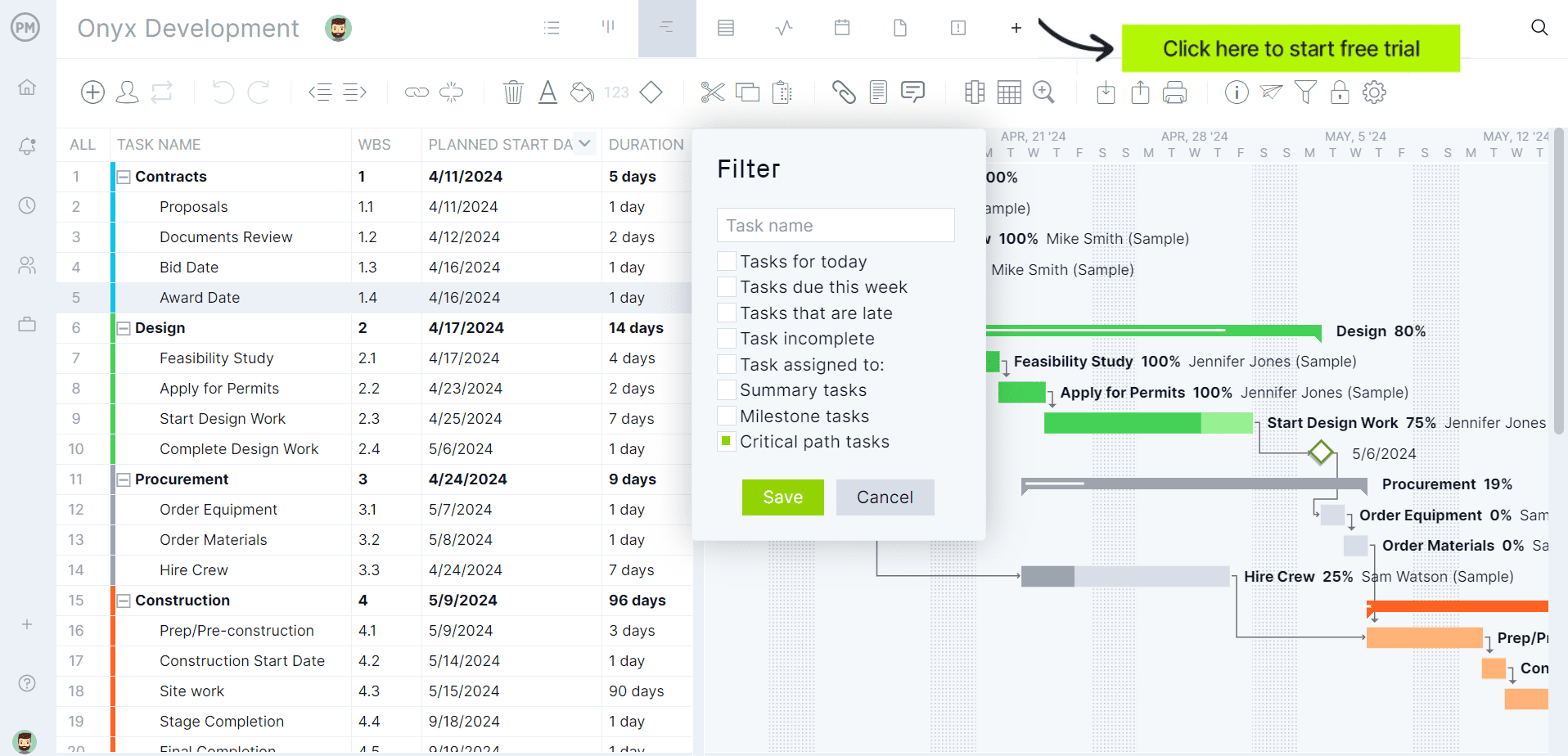
What Is the Purpose of a Site Analysis?
You can look at site analysis diagrams as the graphic translation of key observations about the material conditions of the site. It’s clear why site analysis is so important; it provides an architect with data on sun and shade patterns, movement and circulation patterns and land use, as well as public space vs. private space.
But it’s not only the architect that benefits from site analysis. The client wants to know if the site chosen for the construction is viable and the site analysis allows the client to figure out if the property is financially feasible for development. It also establishes the parameter by which to create the best design for the physical and environmental features of the site.
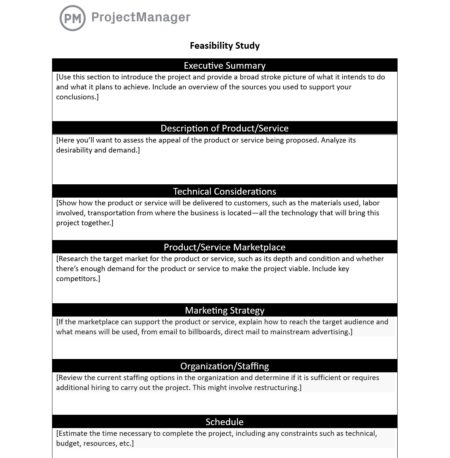
Beyond serving the various parties involved in the construction project, a site analysis has the defined purpose of researching the existing conditions of the project site, including any imminent or potential future conditions, to inform the design process. Without a site analysis, the design is true without context. The site analysis allows the design team to understand the limitations and responses to their work as it applies to the external conditions of the site.
Some issues that’ll be examined throughout the construction site analysis include its location, size, topography, zoning and traffic conditions as well as the climate of the area. Future developments must also be considered in addition to any changes that might occur on the site or surrounding area, such as road changes, cultural patterns and other significant buildings.
Who Participates in the Site Analysis Process?
Here are the parties who are commonly involved in the creation of a site analysis plan.
Project Owner
The project owner is one of the main parties involved in this process as they offer the goals, vision and financial backing to bring the project to fruition. Although they aren’t directly involved in the technical aspects, they shape the direction of the construction plan by making key decisions to ensure the final design reflects their vision.
Architects
Architects typically lead the site analysis process as they have both the creative and technical skills to shape the design based on the unique characteristics of the site. Architects help with site constraints and opportunities including access routes, views, solar exposure and topography, working with other professionals to ensure the architectural design is responsive.
Engineers
“Engineer” is an overarching term that refers to specific engineering roles for a site analysis.
- Civil Engineers: Civil engineers help assess the site’s physical characteristics to ensure it can support the proposed structures.
- Geotechnical Engineers: Geotechnical engineers specialize in analyzing the site’s subsurface conditions to ensure it is structurally sound.
- Mechanical, Electrical, and Plumbing (MEP) Engineers: MEP engineers focus on the installation of technical systems that offer essential services to a building including HVAC systems, wiring and plumbing. Once they’re in place they’re also responsible for conducting building inspections to ensure those systems are working as expected.
Surveyors
For a site analysis, surveyors offer precise measurements of the land and its features such as property boundaries and elevation changes. This helps define the legal and physical limits of the site. As a result of this data, the design can better comply with zoning laws and property lines.
Urban Planners
Urban planners ensure that the construction project aligns with the overarching city or regional planning goals. They work to offer insights into land use policies, zoning regulations and future development plans that could impact the project. They liaise with local authorities to ensure the design complies with height restrictions, building codes and density limits.
Project Managers
Last but not least, project managers are responsible for overseeing the entire site analysis process as well as other activities throughout the construction phases as they ensure each team member is contributing what’s expected of them in a timely manner. They help organize site visits, ensure the right data is collected and that all regulatory requirements are met. This is a crucial role to help integrate findings from the sity analysis into the design process.
Site Analysis Steps
The more details you get, the better your site analysis will be. Designers need to understand the context of the building or structure they’re creating. How the construction will fit in the space and how that space impacts the construction are all key elements of the site analysis. Before construction can begin, you need to take these three steps to deliver a more informed architectural site analysis.
1. Research and Collect Data
The first step is research. This isn’t isolated to the current physical condition and its surroundings, but also any relevant historical information about what the site looked like. You’ll want to see if there were any significant changes to the landscape and/or architecture of the site including what around the site is being analyzed.
Besides reviewing architectural drawings, blueprints, floor plans and computer-assisted designs, one useful tool is Google Street View but keep in mind that the tool only dates back to 2007. There are 3-D mapping tools that use volumetric references. The city or county in which the site is located will have property records that are often online including maps, zoning information, land ownership, school districts, transportation, utilities and more. Community centers, neighborhood associations, local historical societies and newspapers have archives and can be helpful in expanding the context of the site.
Of course, you’ll also want to physically visit the site to take pictures, notes and measurements. Capture the site’s dimensions, but also note its accessibility, whether there’s parking and any nearby transit. Gauge the level of noise, too. The more general impressions you make, the better for a full site analysis plan.
There are different types of data that are factored into the site analysis process. Here are some examples.
- Physical data: Topography, soil, water bodies, vegetation.
- Environmental data: Climate, sun path, wind patterns, precipitation, environmental risks.
- Legal and regulatory data: Zoning regulations, building codes, permitting requirements and land ownership.
- Social and cultural data: Demographics, historical and cultural context of the area.
- Infrastructure and utilities: Road networks, utilities, public transportation and stormwater management.
- Visual and aesthetic data: Views, surrounding architecture and landscaping.
- Economic data: Land value, development costs and local economy.
2. Analysis
Now that you’ve thoroughly researched the site, it’s time for the analysis phase as there should be a lot of information to sift through. See if you can find relationships between the disparate data. Some prefer a visual analysis while others use a more iterative diagramming of the site analysis. When analyzing the information, always remember the project goals and how the site might impact them.
Related: Free Construction Schedule Template
3. Synthesis
Synthesize the information you’ve collected and analyzed to inform the project within the context of every step and scale. The data you’ve gathered needs to be applicable to the project, relevant and easily digestible to serve a purpose. Otherwise, it’s just noise. You need to prioritize the information. Some site analysis is more important than other site analyses, especially through the lens of the design process. These data points inform the design parameter and decisions along that process and each of these steps is applied during the schematic design and programming phase.
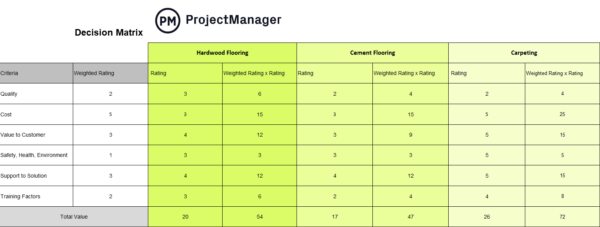
To synthesize the findings from the site analysis process, it’s important to use documentation such as a site analysis diagram, site analysis map and site analysis plan. We’ll explain each of these documents in the section below.
Architectural Site Analysis Documentation
Various components make up architectural site analysis documentation.
Site Analysis Diagram
The goal of a site analysis diagram is to focus on specific factors or relationships such as solar exposure or circulation using simplified, conceptual illustrations. These diagrams highlight key elements on a project site to prioritize clarity over precision. This helps to communicate ideas quickly without getting bogged down in the gritty details. A site analysis diagram is particularly helpful for identifying patterns and insights that will guide the design process.

Source: Columbus Metropolitan Library, Public domain, via Wikimedia Commons
Site Analysis Map
A site analysis map is a detailed and scaled visual representation of the site, including environmental and physical elements. It’s used as a reference to understand the site’s layout, features and constraints. Physical features of the site can include access points, vegetation, boundaries, topography and utilities. It may also include information like sun paths, wind direction and water drainage. The map layout also usually incorporates GIS data and topographic surveys.
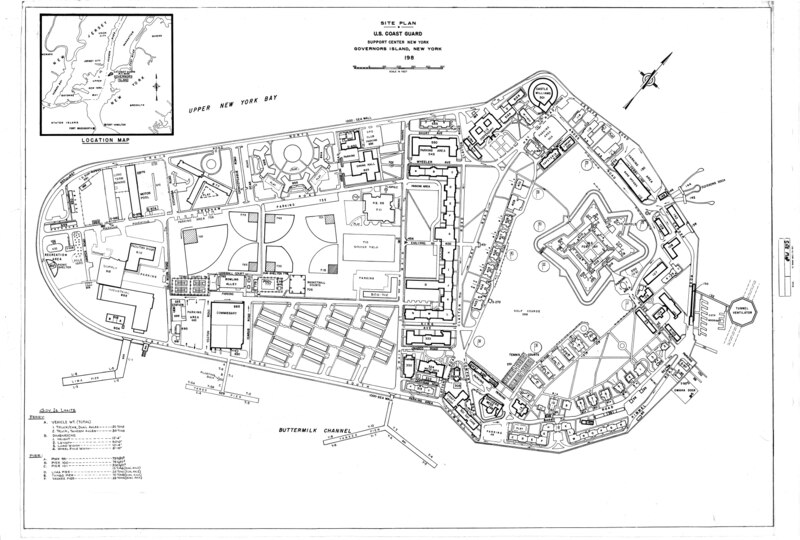
Source: National Archives at College Park – Electronic Records, Public domain, via Wikimedia Commons
Site Analysis Plan
A site analysis plan is a combination of maps, diagrams and written analyses into one comprehensive document. This includes elements like building footprints, parking access points, utilities and building access points. A site analysis plan focuses on future design instead of the site’s existing conditions. This can serve as a complete guide for decision-making as it has elements from both the map and diagram.
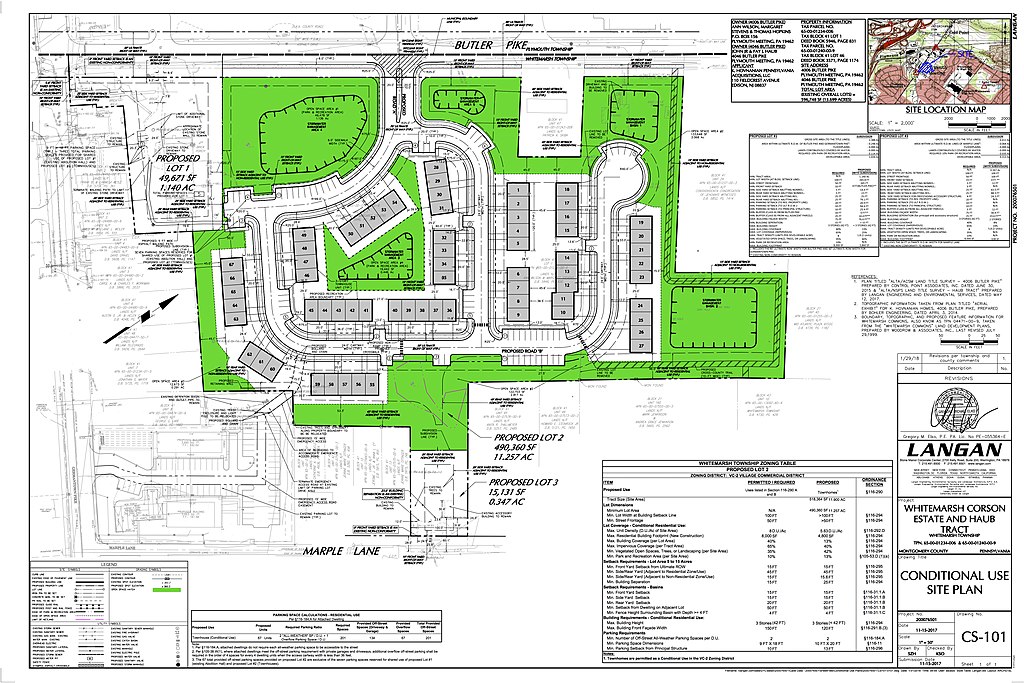
Source: Not Stet, CC BY-SA 4.0, via Wikimedia Commons
Site Analysis Checklist: What to Look For
We’ve defined what an architectural site analysis is, the purpose for doing one and the steps to take to have a site analysis. Throughout this blog, we’ve mentioned many things you’ll need to look out for when doing site analysis. To make it easier, we’ve compiled those and more in this site analysis checklist to ensure you don’t neglect key characteristics.
1. Site Location
General data to collect includes the geographic location of the site, its boundaries and entrance locations and types. You’ll also want to note the site security, if any, and if there are any existing buildings on the site.
2. Context of the Neighborhood
Here’s where you look beyond the property and note the neighboring buildings. You’ll want to measure their distance from the site, their heights, if they are domestic or public buildings and what they’re being used for. Capture site lines, any legal restrictions and noise levels in the neighborhood.
3. Zoning and Regulations
Now, what are the dimensions of the site and are there any easements, height restrictions and so forth? What is the site zoned for, commercial or residential?
4. Natural Features
Also important are the physical features of the site. For example, are there trees or other vegetation or rocks? You’ll want to map the topography. If there’s a river, pond or other body of water, that must be identified as well as the drainage patterns.
5. Man-Made Features
The other side of that coin is the man-made features. This can be an existing building or buildings, walls, surrounding vernacular, setbacks, materials, landscaping, etc., on the site.

Get your free
Risk Tracking Template
Use this free Risk Register Template for Excel to manage your projects better.
6. Legal Restrictions
Don’t neglect the legal constraints on the site. These can range from who owns the property to any restrictions on the site including covenants and future urban development plans.
7. Access, Transportation and Circulation
Note any public or private routes to the site. See if there is vehicle and/or pedestrian access. Figure out what, if any, are the existing circulation routes within the site.
8. Utilities
Check to see if there are any electric, gas, water, sewer and telephone services attached to the property. If there are, note where they are located, distanced, depths and materials used.
9. Cultural and Human
More abstract but nonetheless important are the cultural, psychological, behavioral and sociological aspects of the neighborhood in which the site is located. Note activities that occur around the site, patterns, density of population and ethnic makeup, employment, income, values, etc.
10. Climate
Gather all of the climate data that you can. Note the average rainfall in the area, snowfall, wind directions, temperatures, and sun path and collect this information for every season in the year if it differs from time to time.
ProjectManager & Site Analysis
ProjectManager is construction project management software that’s part of the architectural site analysis but also an integral tool for seamlessly working through every phase of your construction project. It’s collaborative, allowing users to share files, make comments and sends alerts when something is updated. Our tool does more than only connect everyone in the project team; it makes sure the findings of the site analysis are carried through the project from start to finish.
Plan Projects With Interactive Gantt Charts
All of the information gathered by the site analysis informs the design of the construction, but that data also impacts the planning and scheduling of the project. Our online Gantt charts make it easy to organize tasks, link dependencies and create milestones. You can even filter for the critical path and set a baseline to track project variance as you execute the plans. If you get a change order, easily drag and drop to edit the Gantt chart and all plans are updated across the tool at the same time.
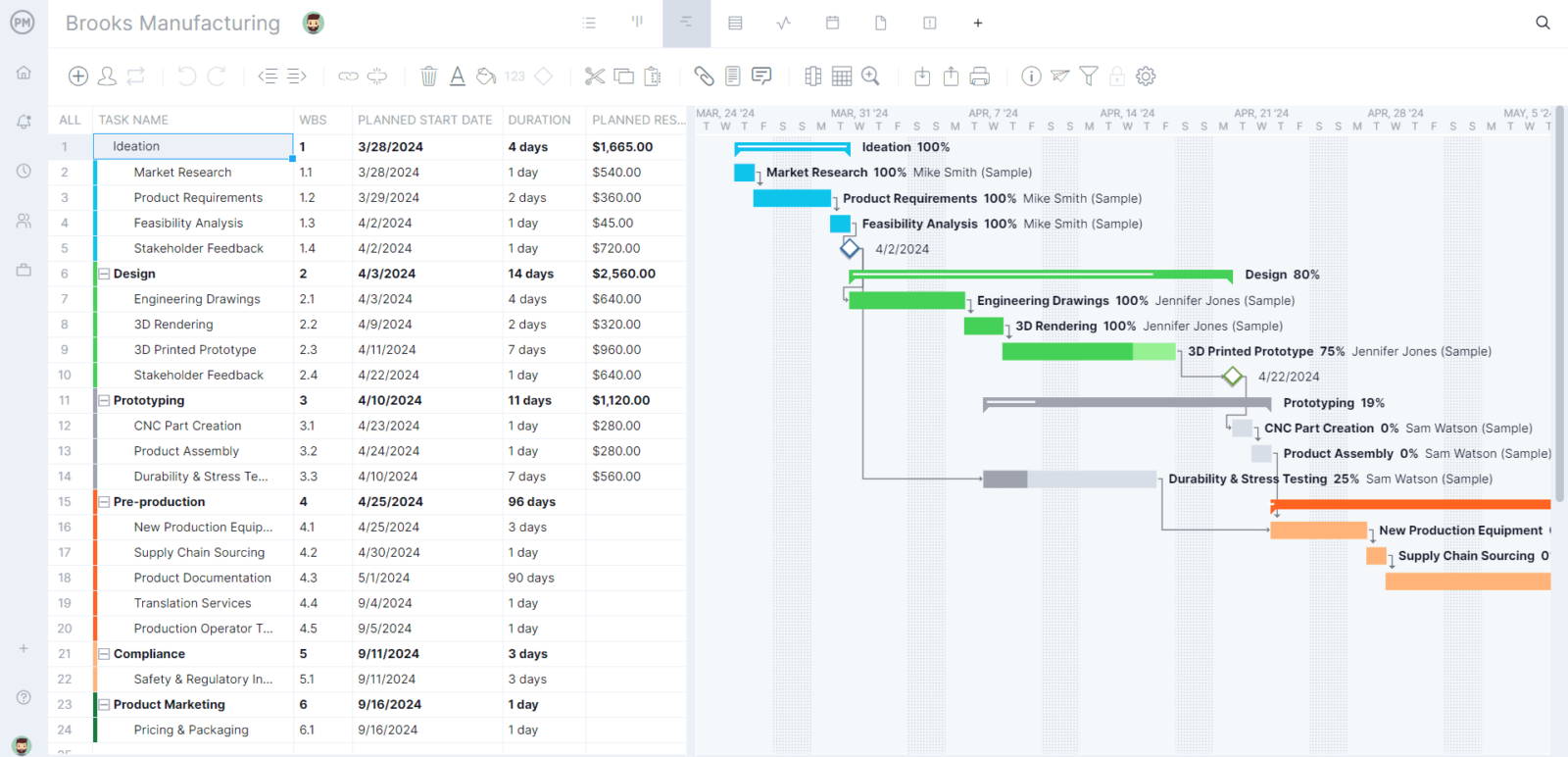
Track Progress and Performance With Real-Time Dashboards
All of the hard work you did on the site analysis is for nothing if you can’t deliver the project on time and within budget. With our online software, you can get real-time data to make better decisions to keep your construction project on track. The live dashboard gives you a high-level view of six project metrics, automatically collecting, calculating and displaying real-time data. Plus, there’s no setup as in lightweight alternatives. Use the dashboard to dive deeper into the data with customizable reports that can also be easily shared to update stakeholders.
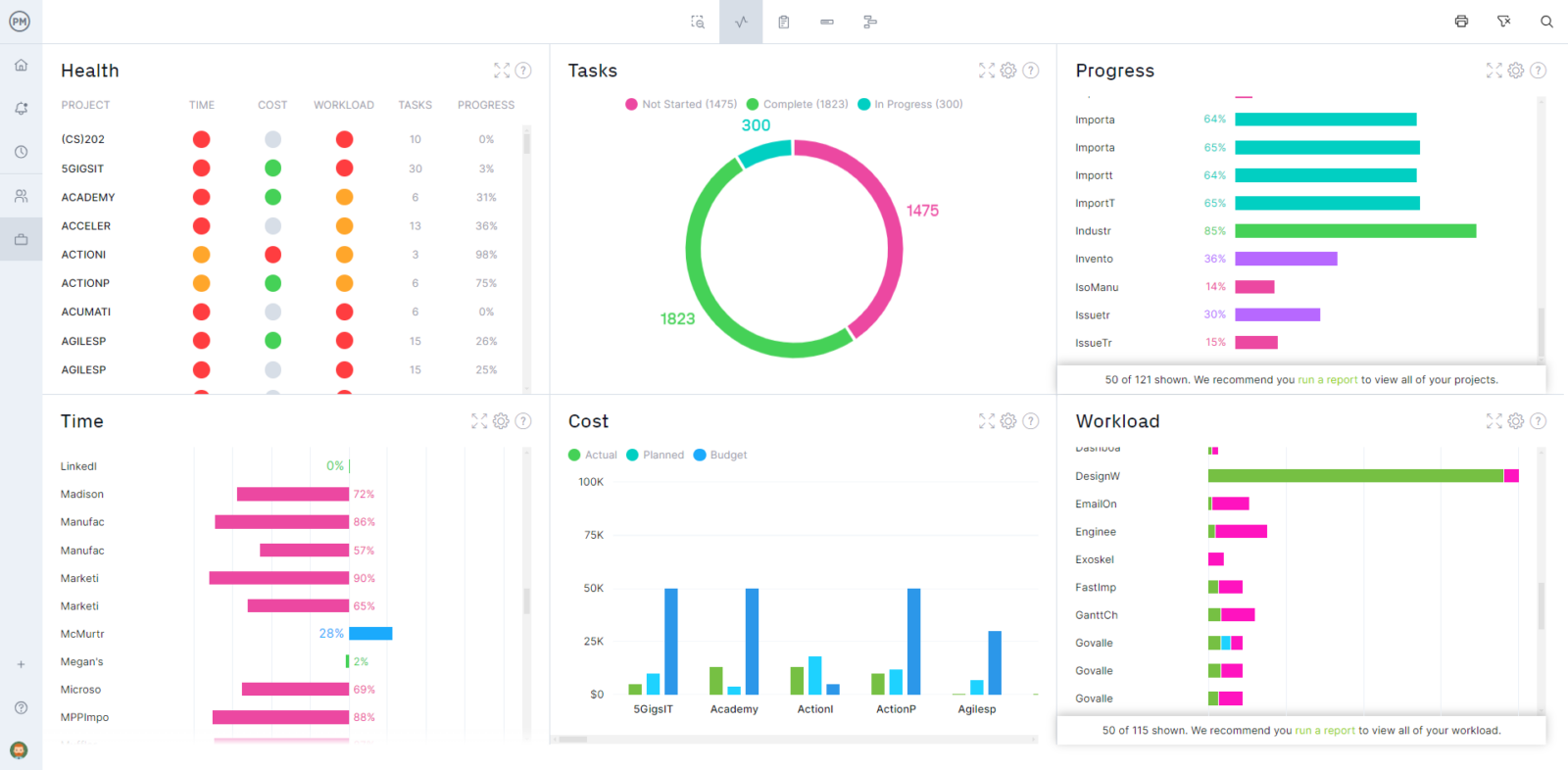
Our software has resource management tools to balance your crew’s workload and secure timesheets to streamline payroll but also track the time they’re spending on tasks. Whether you’re working in the office, on the job site or remotely, you’re always connected to the construction project as it’s happening. Make sure the site analysis is available whenever the project team needs it so you can deliver success.
ProjectManager is award-winning construction project management software that helps you manage site analysis to plan, monitor and report on the project. Our collaborative platform connects everyone no matter which department they’re working in, where they work or how they work. Our multiple project view lets you use the tools you’re comfortable with. Get started with ProjectManager today for free.

